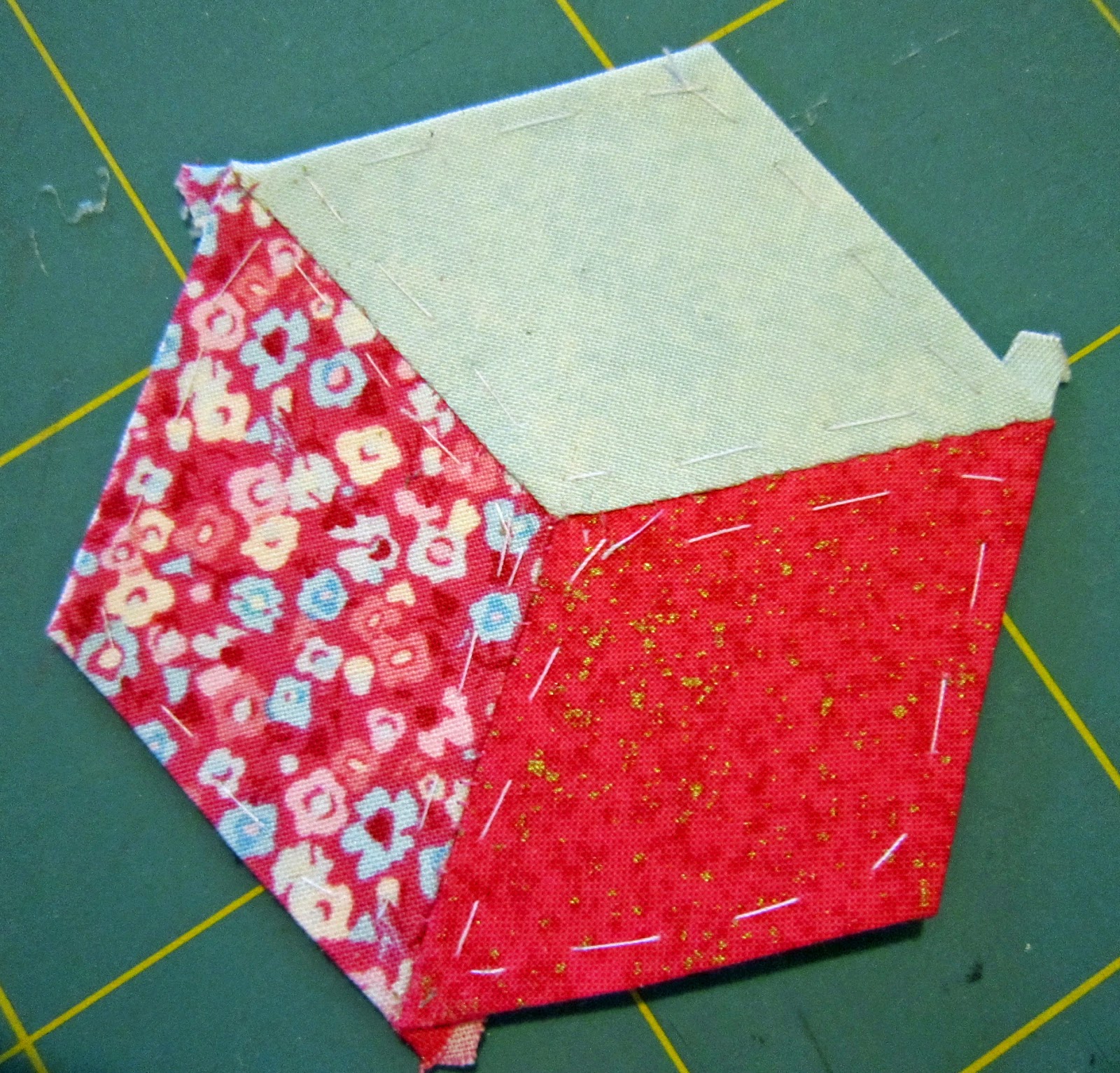 Sewing the diamonds together on the edges requires small neat stitches in a matching thread (not always easy if the diamonds are different colours). A pin helps to keep corners together while you are sewing.
Sewing the diamonds together on the edges requires small neat stitches in a matching thread (not always easy if the diamonds are different colours). A pin helps to keep corners together while you are sewing. Each of the
Each of the tumbling blocks is a hexagon shape made up of three diamonds joined together to give that 3D image - an optical illusion of a shape which looks like a baby's play block. Once six are made they have to be joined with small neat stitches as close to the edges as possible so that the stitches barely show on the right side and so that the cartridge paper linings pull out easily once the tacking stitches are taken out.
 Lots of pressing on the right and the wrong sides is necessary to keep the work flat and also to press in a sharp neat outside edges which will be appliqued to the background fabric.
Lots of pressing on the right and the wrong sides is necessary to keep the work flat and also to press in a sharp neat outside edges which will be appliqued to the background fabric.When the fabric is first folded over the paper shapes there is a 'tail' which overlaps the long pointed corners as you can see in the first photo. These have to be left just as they are all the way through the construction of the tower. On the joined inner edges these curve around each other into a little rosette.
 However when the applique stage is reached outer edges are tacked down and these tails have to be turned in neatly, one fold over the other, and tacked firmly ready for stitching on to the background fabric. The tacked edges should look like this on the back and the front.
However when the applique stage is reached outer edges are tacked down and these tails have to be turned in neatly, one fold over the other, and tacked firmly ready for stitching on to the background fabric. The tacked edges should look like this on the back and the front.
Next, the tower of baby blocks is centred on the 13" square of background fabric and tacked in place to held it flat whilst the applique is done.
 Neat slip stitches in thread that matches the blocks is needed to attach the tower to the background fabric. In other words hand applique done as invisibly as possible is required.
Neat slip stitches in thread that matches the blocks is needed to attach the tower to the background fabric. In other words hand applique done as invisibly as possible is required. There may be a need to use different coloured threads as the thread should match the colours of the blocks, not the background.
There may be a need to use different coloured threads as the thread should match the colours of the blocks, not the background.These last photos back and front show the tower of blocks stitched on but with tacking threads still in place.
the next phase is to add the framing strips, the sashing and then to quilt the block.
To be continued ...

























 I have made a bag with 5" squares of denim and some other dyed fabric. Any bag pattern will work as the front, back and sides are all squares joined together. However about half a metre of lining is needed and some cord and buttons or beads for the pull fastener. I padded mine with fusible fleece but any wadding will do.
I have made a bag with 5" squares of denim and some other dyed fabric. Any bag pattern will work as the front, back and sides are all squares joined together. However about half a metre of lining is needed and some cord and buttons or beads for the pull fastener. I padded mine with fusible fleece but any wadding will do. 